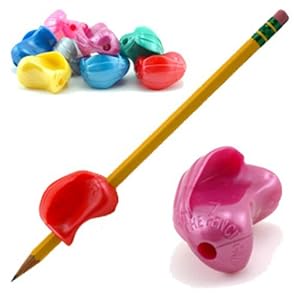The Bible tells us that what is required to enter the Kingdom of God is the simple faith of a child. So why should Christians pursue an academic education?
Because such an education is, in an important way, a means for us to come to have the simple faith of a child, says Jim Kushiner, the executive director of the Fellowship of St. James, publisher of Touchstone and Salvo magazines.
In the last five to ten minutes of his interview from last November on Ancient Faith Radio's "In the World" podcast, Kushiner explains his dynamic view of a Christian education. Because the culture has perceptibly and imperceptibly pervaded our habits of thinking, feeling, and acting, we need a thorough education to rid ourselves of false beliefs and come to knowledge of the truth.
An integrated education in philosophy, theology, the humanities, and the sciences, "gives people the tools to reclaim the Christian mind," to "detoxify and cleanse the mind," to "see the world through the eyes of Christ" rather than be "conformed to the world's mind." An education also allows us to "harvest the fruit" of the riches of the Christian tradition, the Fathers, the liturgy, and the hymnography of the Church. And because the world is created good, it is worthy of study and leads to greater knowledge of the Creator. Studying the glories of creation properly leads to a deep sense of wonder, "the workshop of worship."
This dynamic pairing of wonder and piety, prayer and scholarship, love and knowledge, this is the goal I seek as I educate my children (and continue to re-educate myself in the process).
Saturday, September 17, 2011
Tuesday, September 13, 2011
Penmanship Lifesavers
Remembering to pull these bad boys out of my homeschool supply kit saved our penmanship lesson attempts in our first week of Kindergarten instruction.
out of my homeschool supply kit saved our penmanship lesson attempts in our first week of Kindergarten instruction.
The Pencil Grip Crossover is THE BEST pencil grip out there, as far as I can tell. Until I got ours out for my daughter, she was unable to keep her three writing fingers in the correct position and kept pinching and crossing her top two fingers—thumb and pointer—above the pen rather than keeping them on the sides of the pen.
is THE BEST pencil grip out there, as far as I can tell. Until I got ours out for my daughter, she was unable to keep her three writing fingers in the correct position and kept pinching and crossing her top two fingers—thumb and pointer—above the pen rather than keeping them on the sides of the pen.
I had thought that the triangle-shaped pen we were using might provide sufficient guidance and support on its own, but I was mistaken, at least for little four-year-old hands. The Pencil Grip Crossover has a special wall and cover that makes it impossible to cross or pinch the top two fingers. Older kids starting penmanship later might not need it, but I'm loving how these grips give my daughter the ability to let her fingers keep better pace with her aspirations.
The Pencil Grip Crossover
I had thought that the triangle-shaped pen we were using might provide sufficient guidance and support on its own, but I was mistaken, at least for little four-year-old hands. The Pencil Grip Crossover has a special wall and cover that makes it impossible to cross or pinch the top two fingers. Older kids starting penmanship later might not need it, but I'm loving how these grips give my daughter the ability to let her fingers keep better pace with her aspirations.
Sunday, September 11, 2011
Using Pens for Penmanship: Why Pencils Are Evil
Okay, pencils are not evil. But they are not the best choice for children to use when writing for school work, as Andrew Pudewa (Institute for Excellence in Writing) deftly argues in his article, "Convert . . . to Pens!"
I am so glad I read his article before beginning penmanship with Katherine. While he applies his argument mostly to the use of pens for writing composition, his points about avoiding erasing, increasing visibility, and ergonomic concerns apply at least equally well to introductory penmanship lessons. Read for yourself and be converted!
I am so glad I read his article before beginning penmanship with Katherine. While he applies his argument mostly to the use of pens for writing composition, his points about avoiding erasing, increasing visibility, and ergonomic concerns apply at least equally well to introductory penmanship lessons. Read for yourself and be converted!
